ON THIS ANNIVERSARY OF 1971 WAR, WE BRING TO OUT READERS THE EXTRAORDINARY OF GRIT, COURAGE AND BRAVERY OF A PLUCKY AND INTREPID FIGHTER PILOT
The history of the PAF is replete with examples of great skill and supreme sacrifices. There were plenty of sky-blue warriors who flew their machines repeatedly, looking for enemy fighters in the air or on the ground. There were others who shot the enemy army armor or vehicles on ground to help defeat the adversary. This is the story of the highest shot in the air during the 1971 war with two clear confirmed kills against a much larger Indian Air Force. This gutsy Flight Lieutenant travelled all night to shoot an enemy fighter at hundred feet above ground in a thriller at Peshawar the very next morning.
The duty of the fighter pilot is to patrol his area of the sky, and shoot down any enemy fighters in that area. Anything else is rubbish. Baron Manfred von Richthofen
It was 3rd of December, 1971. Two PAF officers were present at transit lounge at Lahore and were anxiously waiting to fly to Peshawar by a PIA flight. They were Flight Lieutenant Salim Baig Mirza and Squadron Leader S M Anwar. SM Anwar was the official courier for carrying some classified documents to Air Headquarters Peshawar. That is when they found that war has broken out in West Pakistan too when PAF Mirages struck Indian airfields. Baig being the younger and yearning for combat, wished to join the action and reach his squadron the earliest possible. He thought that it was his Sabre cockpit where he belonged and that he should have been there and believed he had been trained and mentored for that very day. They were told that the PIA flight was cancelled and they would have to move by road from Lahore to Peshawar. After some insistence, the PIA station manager arranged a van for their travel from Lahore to Peshawar. There was no motorway those days but a less busy Grand Trunk road from Lahore to Rawalpindi and then leading to Peshawar. They were made to travel without head lights that made the journey longer and a little more agonizing as enemy air raids were expected and no lights were switched on in the towns driven by. Of course, there were no mobile phones those days to know the ongoing developments about war. Thus, the two officers with uncertainty about what was happening, endeavored to reach Peshawar at the earliest.
“We reached PAF Officer’s Mess Peshawar at about six in the morning of 4th December and after changing into my flying gear I headed straight for my squadron. I was keen to get into the action because I had already missed the opportunity of taking part in the first strike to Srinagar airfield.“
When things go wrong, as they sometimes will When the road you are trudging seems all uphill When care is pressing you down a bit, Rest,if you must but don’t you quit! — Anonymous

Salim Baig, itching to be in the thick of where the action was decided not to quit. He reached Peshawar on December 4 morning, changed into coveralls and rushed to his No 26 squadron. His persistence paid off and in his own words “We reached PAF Officer’s Mess Peshawar at about six in the morning of 4th December and after changing into my flying gear I headed straight for my squadron. I was keen to get into the action because I had already missed the opportunity of taking part in the first strike to Srinagar airfield. With a thousand hours on the F-86 Sabre, having travelled all night with little sleep, this plucky combat aviator was itching for a fight with the enemy. He was delighted to be put on air defence alert straight away on reaching the stand by hut.
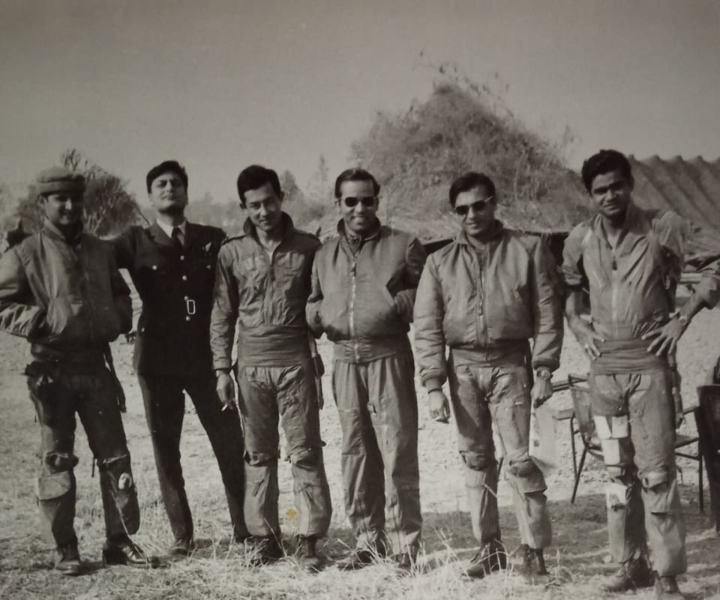
As he was being updated and briefed for the mission, Indian Air Force (IAF) Hunters struck Peshawar airfield at 7:15 am. They caused no damage except destroying two dummy aircraft on the tarmac. However the Base Commander instructed to immediately man two additional aircraft for scramble, if the need arose. Baig waited and waited with his leader Flight Lieutenant Khalid Razzak and every minute was full of excitement and tension. Little did he realize that he had ridden a blind van all the way from Lahore to Peshawar for a purpos. would he achieve it, that only providence knew, but for which he had been trained hard since he joined the PAF. Despite the rigours of the night journey, Salim Baig was wide awake and alert with excitement, there were no signs of tiredness and sleeplessness but he was pensive and thought hard. In his words “Excitement was running high in anticipation of action with the enemy aircraft who had dared us and thrown up a challenge with first strike. But it was seemingly an unending wait of more than two and half hours in the cockpit. During this waiting period all sorts of questions came to my mind. Will the IAF aircraft again attack our base? Will we get a scramble in time to intercept? Will it be a futile wait? Will some other pilots replace us before we launched into action etc. etc?”
Sitting in the cockpit of aircraft tail No 412, Baig recalled the exciting journey of the previous night. He smiled because overzealous crowds had shouted and harassed, if not attacked, their van for switching on the van lights even momentarily. He further smiled, for this was probably going to be his tryst with destiny something he had dreamt of for a life time.
At about 1030 hours, the hooter blew and they were asked to scramble. Excited at the thought of impending combat, the adrenalin rushed as the pair started up their trustworthy Sabres. Both the aircraft were airborne in less than three minutes. Radar controller asked them to climb to 5000 feet and head for Cherat Hills about 30 miles in south east of the Peshawar. Just after two to three minutes of flight in the direction of Cherat, they were asked by the Controller to go back to base to counter an imminent Indian attack onto Peshawar airfield. One hard turn and both aircraft were approaching the base in a westerly direction. While doing so they heard “Killer Control” (ground observer) that the airfield was under attack by Indian Hunters who were seen heading in easterly direction towards Peshawar town. Baig spotted one enemy aircraft well below at low altitude heading in opposite direction and he immediately updated the Leader who acknowledged it. They both did a hard turn-about to go in the direction of the enemy aircraft.

But as they rolled out, once again they received a call, “Hunters were pulling up for another attack”. Apparently sensing no opposition, the raiders decided to have one more go at the airfield. But this was not to be, as the PAF defenders were about to pounce at them. On hearing this, both PAF pilots turned in the direction for the airfield. Baig gave a call and punched his extra fuel tanks as he prepared for a hard manoeuvring combat at low altitude. The North American F-86 Sabre, designed by Edgar Schmued, was a legendary jet fighter and suited for turning fights against the Hunter at low altitude. No wonder, it was the backbone of the Pakistan Air Force in the Indo-Pak wars of 1965 and 1971. Flt Lt Baig had almost mastered this fine machine by then and was about to prove its manoeuvring and shooting prowess to the Indian attackers.
“The Gnat levelled his wings and headed for the airfield as if to indicate that for him the fight was over. I stopped firing at him and saw the canopy of his cockpit fly away from the aircraft. But the very next moment the Gnat snapped over inverted on its back and crashed into the undulated ground of the valley, killing the pilot.”
Right over the base, Baig spotted one Hunter turning left across the runway and informed the leader. By then the leader Flight Lieutenant Khalid Razzak too had seen the raider, called contact and was already in a dive to position himself behind the enemy aircraft. That is when Baig spotted another Hunter from the right side, trying to sneak in behind the leader. Baig immediately updated his leader that he was manoeuvring for the second Hunter who was still more than a mile behind him. These moments needed courage, grit and skill, traits and beliefs the PAF had adequately prepared these two for.
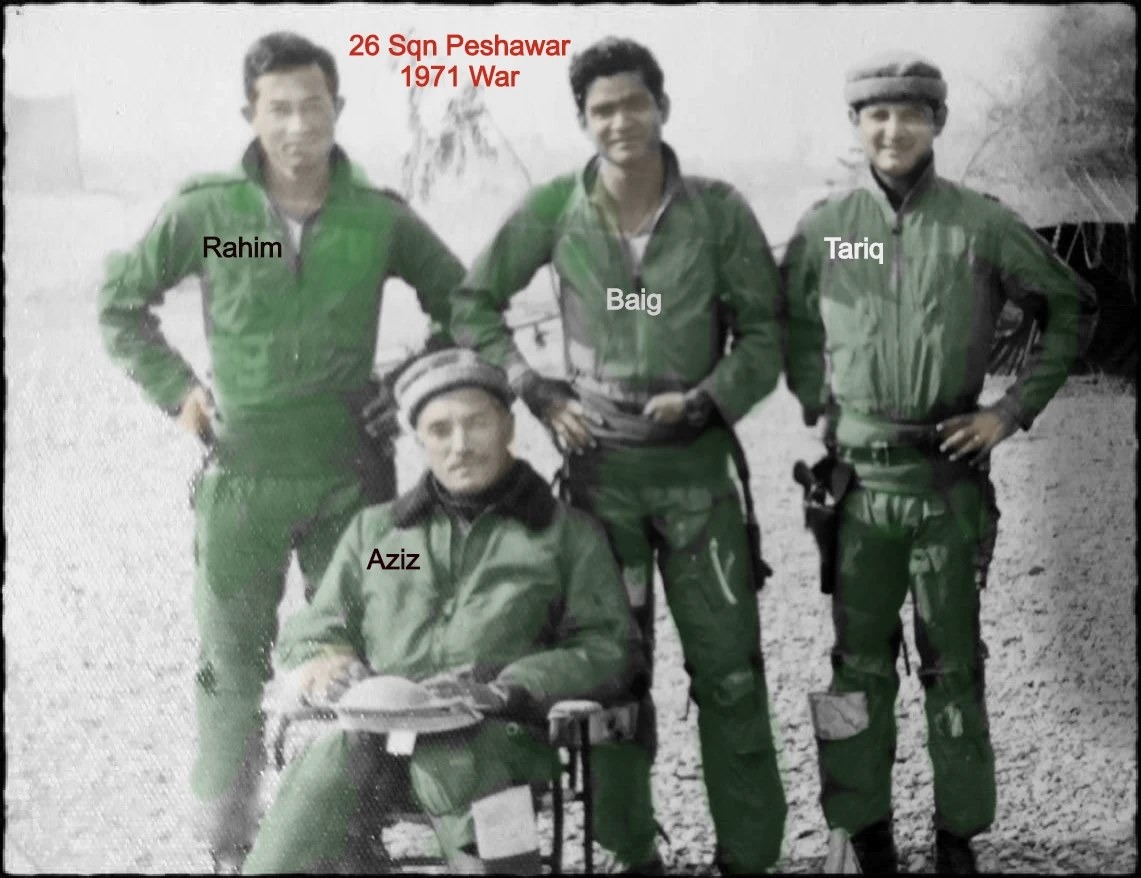
It was a unique situation, typical merry go round you see in the fun fairs and in World War II air combat movies. Lead Hunter was chased by the Sabre-leader, who in turn was pursued by the No 2 Hunter, which in turn was being pursued by the Sabre No 2 flown by Salim Baig. While the two in front lagged behind their targets by almost a mile, Baig being lighter with no extra fuel tanks closed in behind the second Hunter that pursued his leader. That is when his skill, instincts and all the training kicked in, he tracked his target in the A-4 gunsight pipper over the adversary canopy and opened fire. In his own words “While firing at the enemy aircraft I was getting closer in range but in spite of my bullets hitting the target, there was no sign of smoke or fire. The Hunter was proving to be a tough nut to crack. I was aware that the Hunter’s distance from leader’s aircraft was becoming less and could be fatal if not warned in time. I, therefore, told leader to “Break” a manoeuvre performed by fighter aircraft to avoid extreme danger. At the same time my bullets showed their effect and the Hunter aircraft started to emanate thick smoke from the right side of its fuselage and wing root and the next instant I saw him hitting the ground.”
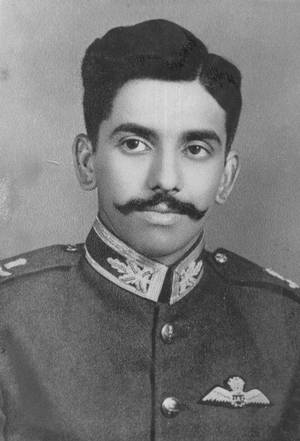
Flying Officer Kotteiezath Puthiyavettil Muralidharan could not eject and went down with the aircraft. Muralidharan was from Nilambur and belonged to No. 20 Squadron of IAF. The other enemy aircraft managed to escape. Later it was known through IAF war history that Flt Lt Khalid Razzak had damaged the other Hunter who managed to land at an under-construction runway at Jammu in Kashmir. People at flight line saw the whole fight. Their excitement was visible and reached its peak when both aircraft landed back. They lifted Baig on their shoulders and shouted Allah O Akbar slogans.
Again, on December 14, 1971, a formation of four F-86F Sabres led by Wing Commander Sharbat Ali Changezi, along with Flight Lieutenants H K Dotani, Amjad Andrabi and Maroof Mir, took off from Peshawar to attack Srinagar airfield. To ensure success of the bombing mission, Flight Lieutenants Salim Baig and Rahim Yusufzai flew in two F-86s as escorts. They knew that the IAF had no radars in Kashmir valley and depended on the observation posts pitched atop the Pir Panjal ridges, and elsewhere, to detect the aircraft.
The Sabres descended to low level over the Pir Panjal Pass and turned toward north of Kasba village to line up Northwest to southeast in 13/31 direction, the Srinagar runway orientation. The leader, Wg Cdr Changezi and his team dropped their bombs on the runway but then were surprised by a young maverick IAF Flying Officer. Wg Cdr Baig narrates these moments in the following words. “I heard leader telling No 2 to immediately ‘Break’ to the left because there was an enemy Gnat aircraft firing at him. Leader and No 2 commenced a tight left turn to avoid the danger and No 3 (Flight Lieutenant Amjad Endrabi) after pulling out of the bombing run spotted them and manoeuvered to get behind the Gnat. No 4 had in the meantime completed his bombing dive and having no visual contact with the other formation members decided to leave the battle area.” Baig asked No 6 (his wingman) to jettison external fuel tanks and headed in the direction of the fight which had developed within visual and hearing distance west of the airfield. Because of high ‘G’ turns No 2 had depleted his speed and was unable to sustain manoeuvring energy for the fight. He, therefore, decided to roll out and leave the scene of action by turning away to the right. No 3 had by this time taken position behind the Gnat and had commenced firing with his guns. He also announced on the radio that he was going to shoot him down. Baig picked them up below and settled into an orbit on top at about 3-4000 feet higher. He could see the three aircraft in a tight circle with the Gnat being in front, a Sabre (No 3) behind him who was followed by another Sabre (leader) at a height of about 200 feet above the ground. Baig further explains the battle account in these words. “I was expecting the matter to be over in a short while because No 3 was well placed within gun range behind the Gnat. After a few seconds I heard No 3 calling that he was “Winchester” which meant that he had run out of ammo and his guns had stopped firing after missing the target in front.” Endrabi found after landing that his bullets missed the mark because of a drop tank hang up i.e. when he punched his extra fuel tanks, one did not jettison and caused asymmetric firing conditions and spoiled his gun tracking solution.
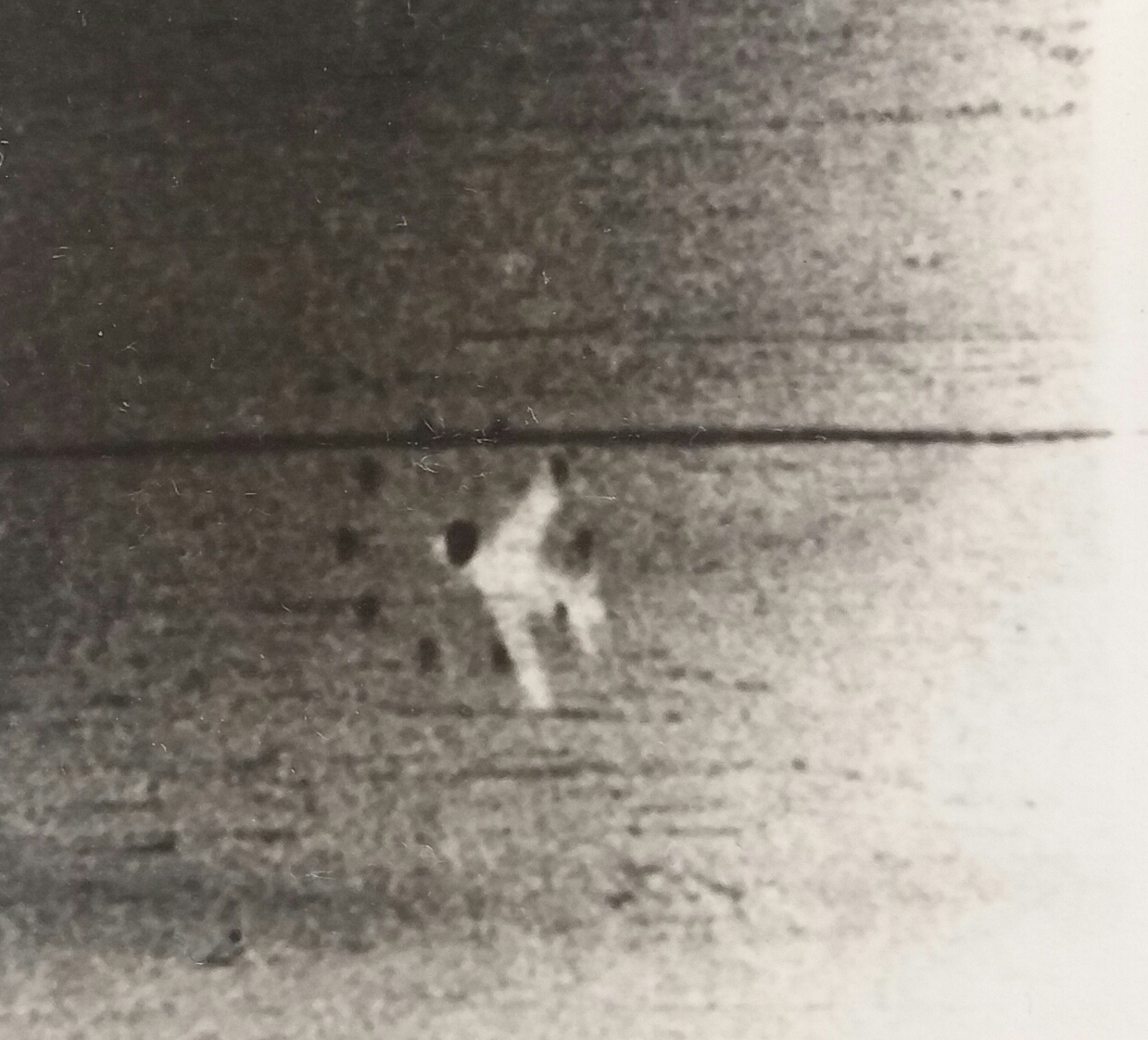
At that time he saw the Gnat momentarily roll his wings level to jettison underwing tanks and then went into a high ‘G’ turn with renewed vigour to manoeuvre behind the lead Sabre. Within a couple of turns he could see the distance dangerously closing between the two. That is when he decided to get into the act. Wing Commander Salim Baig recalls the most challenging moments of his life and narrates: “At the same time, I heard an anxious call from the leader asking me to come down and relieve them of this imminent threat. I asked my wingman to get into fighting position and then dove down manoeuvring my aircraft to get into the orbit of the fighters below. In a matter of few seconds, I was behind the Gnat and firing from a close range of about 1000 feet. In a three seconds burst from my Sabre’s six machine-guns firing at the rate of 120 round per seconds, I hit him square and thick black smoke started coming out from under his fuselage belly. The Gnat levelled his wings and headed for the airfield as if to indicate that for him the fight was over. I stopped firing at him and saw the canopy of his cockpit fly away from the aircraft. But the very next moment the Gnat snapped over inverted on its back and crashed into the undulated ground of the valley, killing the pilot.” Wing Commander G M David, retired Indian Air Force officer narrated in an article that “they found 37 bullet holes on the Gnat’s rear fuselage, tail plane and fin. That knocked out her flight control system, meaning the laws of flight had abandoned the Gnat”.
With a thousand hours on the F-86 Sabre, having travelled all night with some bit of sleep, this plucky combat aviator was itching for a fight with the enemy. He was delighted to be put on air defence alert straight away on reaching the stand by hut.
No 18 Sqn (Flying Bullets), equipped with Gnats was responsible for the Air defence of Srinagar Air Field. Flight Lieutenant Baldhir Singh Ghuman (G Man) and Flying Officer Nirmal Jit Singh Sekhon were ordered to scramble to meet the Pakistani formation. Unlike modern fighters, both the Gnat and the Sabre were not armed with air-to-air missiles and front guns were the only weapon available to down the enemy aircraft in combat. Since fighter jets are fast dynamic objects constantly varying positions apace in all three dimensions, shooting down another fighter with guns demands sublime skill.
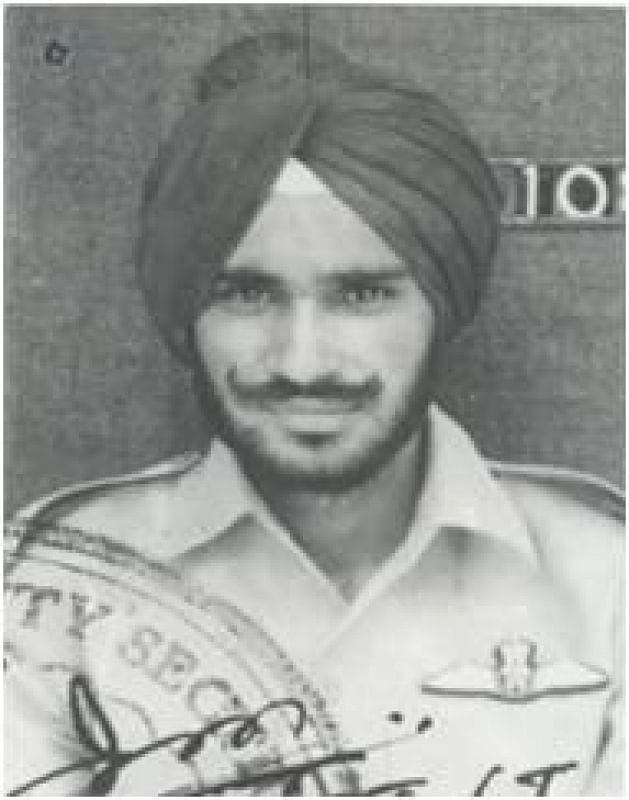
Flying Officer Nirmal Jit Singh Sekhon was decorated posthumously with the Param Vir Chakra, the highest wartime Indian gallantry award. It is a coincidence that on November 3, 1947, Major Som Nath Sharma, India’s first PVC, was also killed on the same place in the Battle of Badgam near Srinagar. The first Indian Air Force PVC too was downed and killed by Wing Commanders Salim Baig Mirza close to Badgam. Major Somnath Sharma was killed by the freedom fighters of Kashmir. Flying Officer Nirmal Jit Singh Sekhon was killed by another warrior from Pakistan, albeit a Sky-Blue Air Warrior.
Wing Commander Noman and Squadron Leader Hassan Siddiqui were only following the tradition when they downed Abhi Nandan’s Mig-21 and SU-30 respectively on 27th February 2019 in our favourite combat killing ground the skies over Indian occupied Kashmir.
After the war, Baig was redeployed back to Risalpur as a flying instructor, where he resumed training flight cadets with gusto. as if nothing has happened. He did no bragging; he didn’t tell anyone about his grueling combat at low altitude with typical fighter pilot egos. He did not entangle his hands like typical fighter jocks that “there I was tracking the enemy aircraft and opened fire from close range, then I saw him explode into a fireball…”, in the bar. Having shot two Indian aircraft, he did not show any signs of a self-aggrandizing hero. He never boasted about his stellar achievements. He was humble and down to earth human on ground and an aggressive aviator and an outstanding instructor pilot (IP) in the air. Thus, he never fitted the definition of the conventional tough looking IP who would resort to physical or verbal violence with his students. He mentored many a young man into aviators who served the PAF and air forces the world over (on deputation/secondment) well.
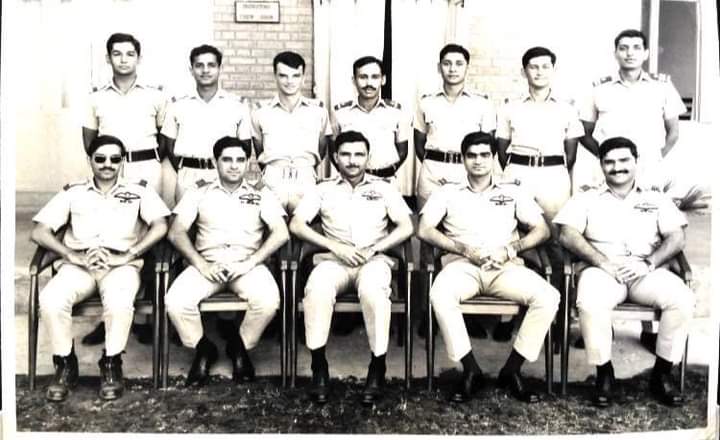
Baig was not only a great fighter pilot and an accomplished professional in combat flying, he also mentored a number of officers from ab initio training at PAF Academy to converting them into combat flying at No 26 Squadron. He taught the tricks of fighter flying to Air Chief Marshal Mushaf Ali Mir (Shaheed) Chief of Air Staff, as his personal student in fighter conversion course at Peshawar. He also flew with Air Marshal Qaiser Hussain (Retired), Group Captain Hamid Saeed (Shaheed), and with Flying Officer Tariq Rehman (Shaheed). He also flew with Wing Commander Mashood Ahmed (Shaheed), Air Commodore Hashim Pervez Yamin (Retired) and Air Marshal Masood Akhtar (Retired) as personal students at PAF Academy Risalpur.
Baig being lighter with no extra fuel tanks closed in behind the second Hunter that pursued his leader. That is when his skill, instincts and all the training kicked in, he tracked his target in the A-4 gunsight pipper over the adversary canopy and opened fire.
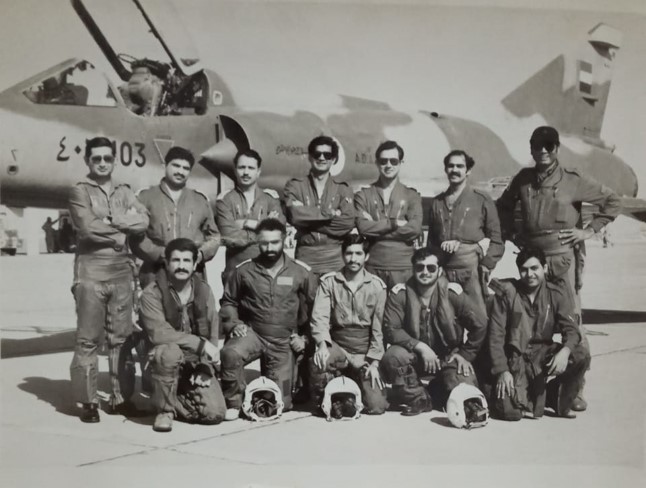
One of those mentored by him in No 26 Squadron, Air Marshal Qaiser Hussain (Retired), says about Baig: “I am a lucky person to have been his student in Fighter Conversion Unit. I cannot forget him and his witty remarks. While converting onto F-86 Sabres, I flamed out at 35 feet AGL during a skip bombing run at Jamrud firing range as his no.3. As I pulled up and announced my engine failure, he did a barrel roll and in no time was on my wing, guiding me and got a relight, as I was told to eject if no joy (not getting a relight of the engine). I was then escorted by him and I landed through a Simulated Flame Out (SFO) pattern. Allah bless him and his family. I was lucky to be associated with him during our deputation to UAE, where we flew mirages.
Baig was not only a great fighter pilot and an accomplished professional in combat flying, he also mentored a number of officers from ab initio training at PAF Academy to converting them into combat flying at No 26 Squadron. He taught the tricks of fighter flying to Air Chief Marshal Mushaf Ali Mir (Shaheed) Chief of Air Staff, as his personal student in fighter conversion course at Peshawar.
His personal student at the academy, Air Marshal Masood Akhtar (Retired) has the following to say about this great sky-blue warrior: “I was most fortunate to be mentored by this great IP because of my peculiar nature. Being more of an introvert and a shy person to boot, I would not have survived a full term with a gung-ho, brash flying instructor. There was no way I could have made an aviator in the PAF without this great man. There was not a single occasion when Baig Sahib raised his voice or lost his temper on my failures or weaknesses during training of which there were quite a few. He was so down to earth and humble that I could actually never discover his stellar achievements during war. He in fact never talked about his extraordinary performance during the conflict with India. Very frankly, while many hands shaped my career during my 35 years’ service with the PAF, without Baig Sahib’s nimble hands and mature and sober nature, there was no way I would have survived the tough and grueling lying training regimes at Risalpur. In brief Baig Sahib has had a major hand in what I am and who I am today in life. I am truly grateful to this great combat aviator”.
Begum and Wing Commander Salim Baig Mirza raised a great family (well planned this time) with two sons and one daughter. Their eldest son and the daughter are doctors, their number two son is a Captain in the Pakistan Navy. This time probably, the Baigs carefully chose the family size and deliberately mentored their children with a planned parenthood, rather than leaving their children to upheavals of destiny. But Salim Baig Mirza was perhaps an exceptional human being who through his persevering effort, came out as a fine human being, an officer and a gentleman and an outstanding combat aviator.
Destiny takes Salim Baig places
Born in Hisar, Haryana in India in 1942, Baig was the 7th amongst thirteen siblings…seven brothers and six sisters. His father was a police officer who opted for Pakistan. The partition upheaval saw his family migrate to and settle in Multan where he attended Muslim High School for his primary and secondary education. Fast forward to the late fifties, he first joined Forman Christian College and then the illustrious Government College. As the fate decided, one day in 1961 he with two class fellows found himself in front of the PAF Information and Selection Center on Abbot Road Lahore. The three saw a crowd and asked simply out of curiosity “aithe ki ho raya ai?” Someone told them “pilotan di bharti ho rahi ai!” Wearing the prestigious Government College maroon blazers, the three managed to jump the queue waiting to see the recruiting officer. Baig was the first one to go in. Flight Lieutenant Jalil asked him only three questions: Name, age and if he was from Government College? Those were the initial, simple days when there were no complex intelligence tests etc and boys were accepted with a second division Matric i.e. tenth grade only. He therefore only had a brief pre-medical checkup and then ended up in ISSB Kohat which he cleared with ease. It was only after the final medical board at Mauripur Karachi and the final call up letter, that his parents found out as to where the young Baig was ending up in life.
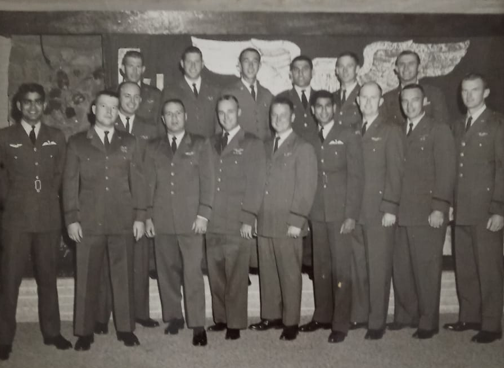
Thus, as per fate and destiny, Salim Baig ended up in PAF College Risalpur in August 1961 in the 36th GD(P) course. He stood out at the flying training college and along with four course mates was sent to the US. There he flew T-37 and T-33 at Laredo (Texas) and then F-86 for Combat Crew Training course at Nellis Air Force Base. Baig joined back the PAF in 1964 and was posted to No 15 F-86 Squadron at Sargodha where he flew operational missions during 65 War. Fate took him into combat environment even in that brief participation in the seventeen-day war. He experienced his first combat when he saw his leader Flight Lieutenant Yusuf shoot a Gnat in Taran Taran area between Kasur and Amritsar.
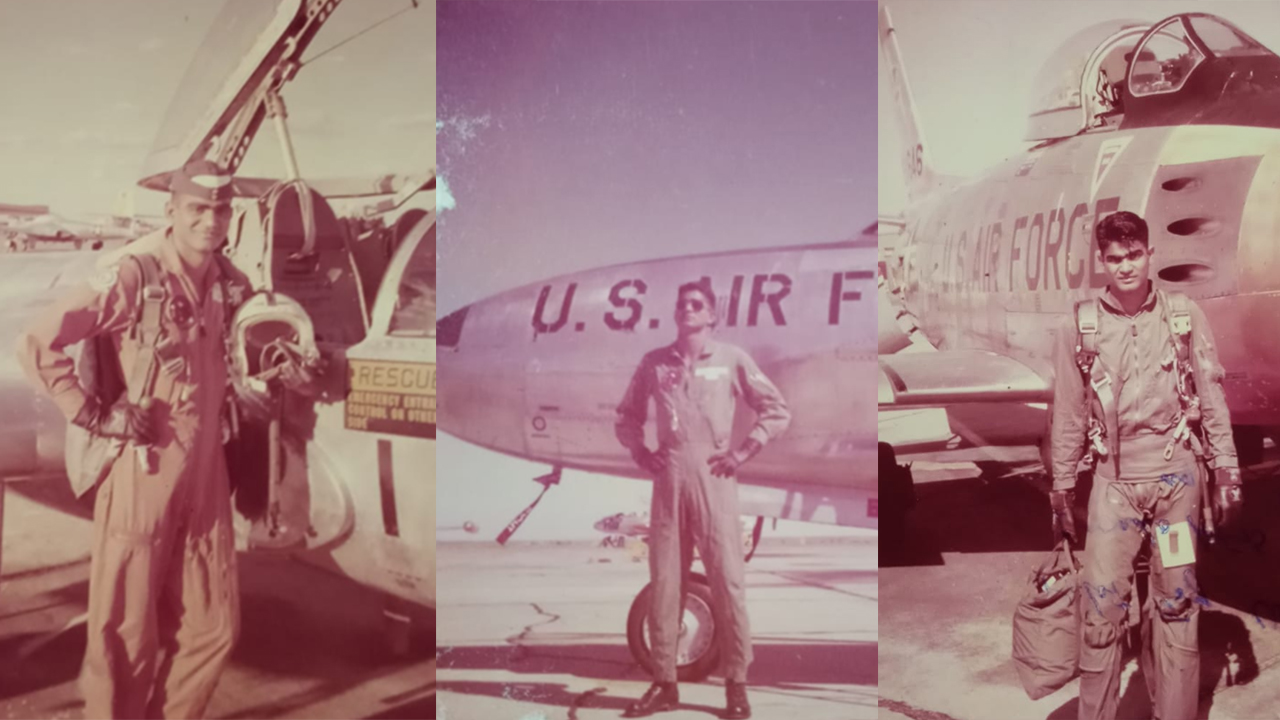
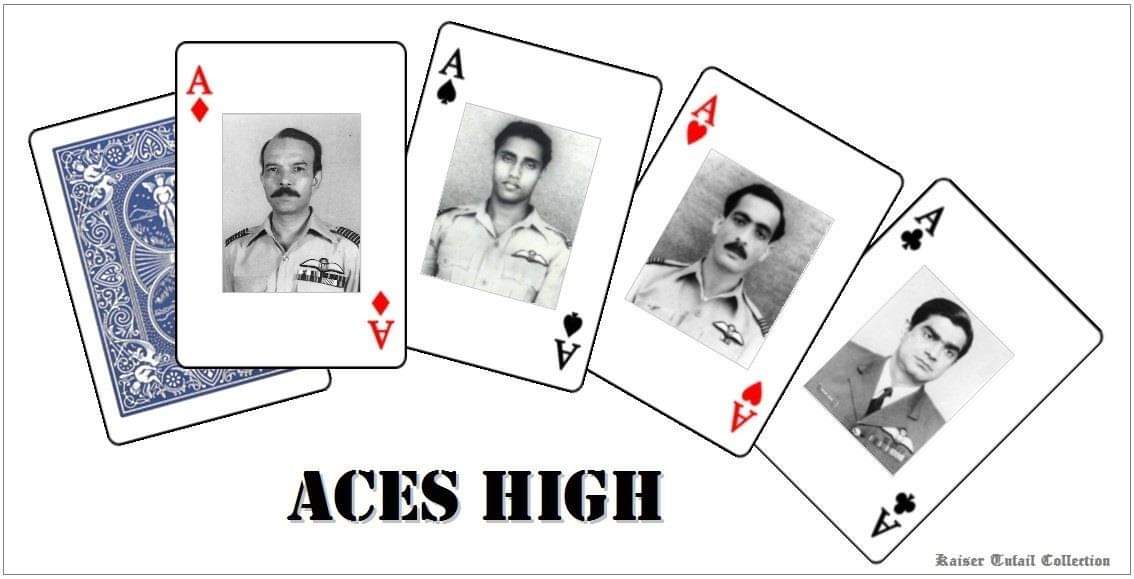
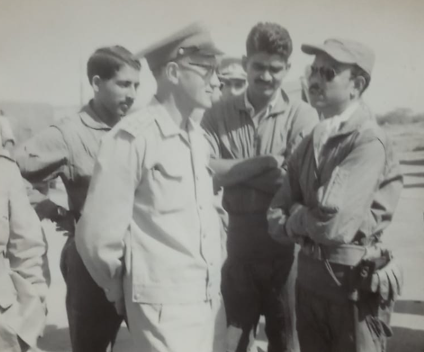
But 71 war was a different story. By then Salim Baig had honed his skills as a fighter pilot and was looking for aerial combat. As described, while his stellar achievement was shooting the two Indian fighters over Peshawar and over Srinagar skies respectively, there were other interesting tidbits too in his story. It so happened that two of his Indian Air Force mates from the fighter training stint in the US Flight Lieutenants Tejwant Singh and Bhargwat were shot down and became prisoners of war in Pakistan. Both were subsequently interned in the PAF Provost Unit along with nine others, just behind the present day PAF Information and Selection Center in Rawalpindi. Out of sheer chivalry of a fighter pilot for another (even from the enemy air force), Baig one day ended up in the temporary internment camp with fruits, eatables and books for his erstwhile colleagues. While he found Tejwant in high spirits, Bhargwat was rather depressed, even though it was a mere confinement with a rather friendly treatment. So friendly that three of the internees one day managed to escape with an intent to travel to India via Afghanistan. They were fortunately (for the PAF) caught at Landi Kotal and were almost shot by tribesmen before being rescued by PAF through a phone call to the local political agent. But that is a different story. Baig exchanged pleasantries with Tejwant who had been shot down by a rookie Flying Office Maqsood Ameer in a Sabre, and asked “Tango (his nick name from US days), why on earth did you get into a turning battle with an F-86?” To which the Indian replied “…yar bus ghalti ho gaee”.
Baig is respected as fighter pilot and as the highest shot during 71 War, among the veterans and in the Pakistan Air Force.


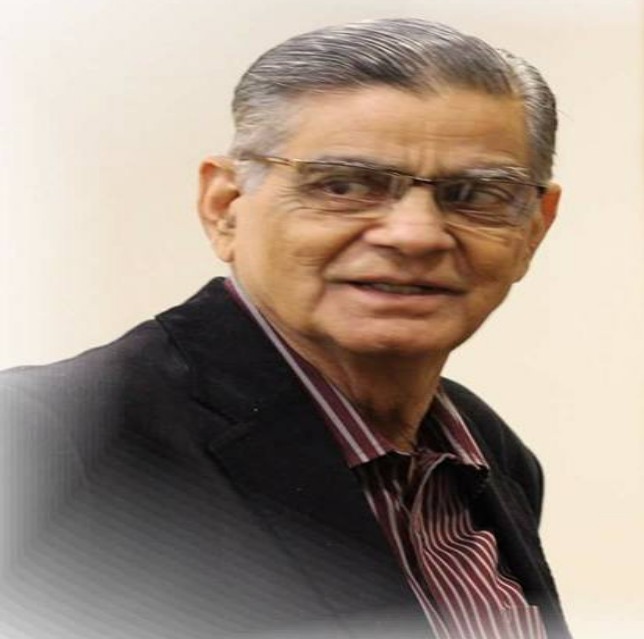


I have been absent for some time, but now I remember why I used to love this website. Thank you, I’ll try and check back more often. How frequently you update your web site?